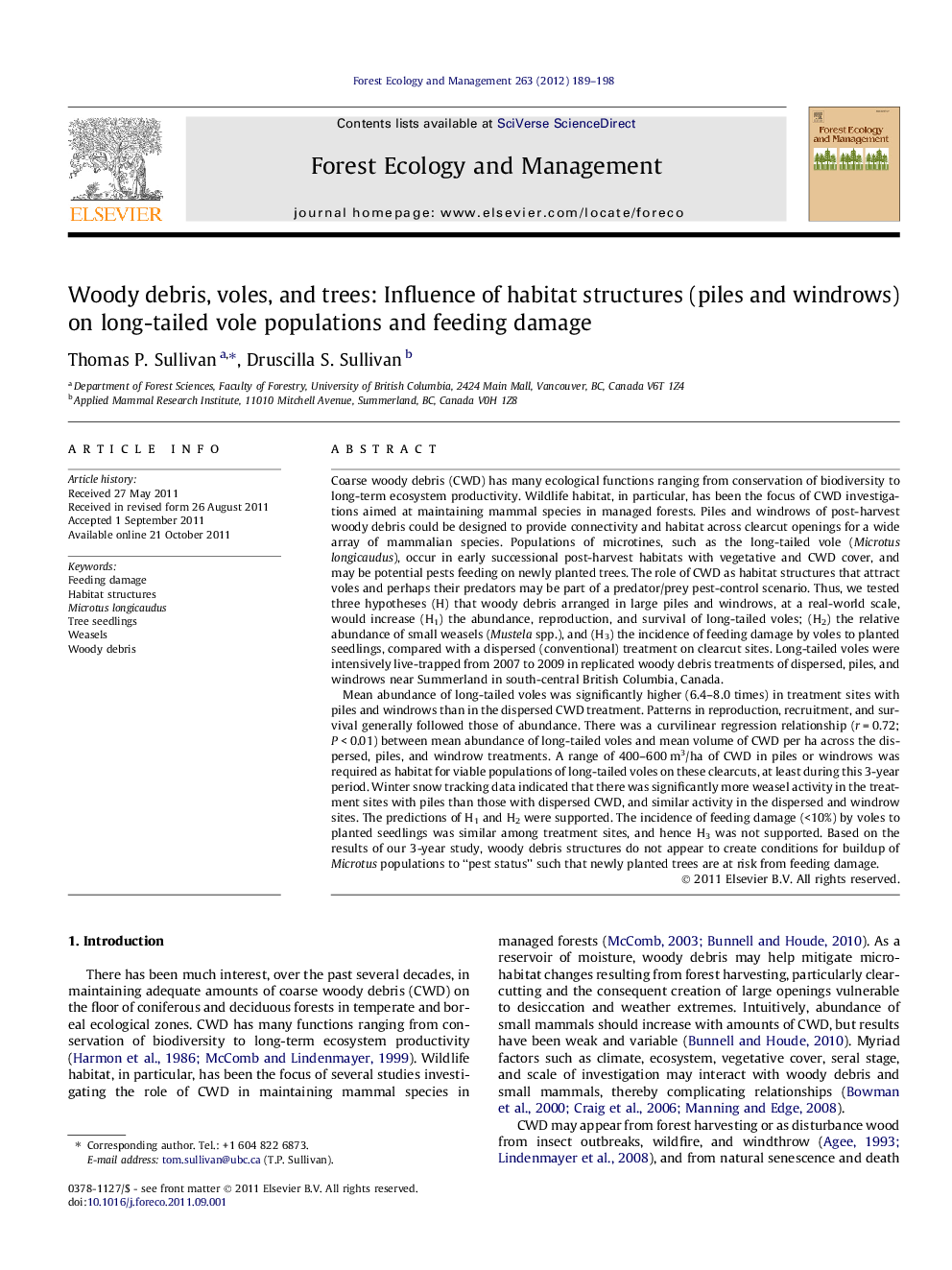| کد مقاله | کد نشریه | سال انتشار | مقاله انگلیسی | نسخه تمام متن |
|---|---|---|---|---|
| 87767 | 159265 | 2012 | 10 صفحه PDF | دانلود رایگان |

Coarse woody debris (CWD) has many ecological functions ranging from conservation of biodiversity to long-term ecosystem productivity. Wildlife habitat, in particular, has been the focus of CWD investigations aimed at maintaining mammal species in managed forests. Piles and windrows of post-harvest woody debris could be designed to provide connectivity and habitat across clearcut openings for a wide array of mammalian species. Populations of microtines, such as the long-tailed vole (Microtus longicaudus), occur in early successional post-harvest habitats with vegetative and CWD cover, and may be potential pests feeding on newly planted trees. The role of CWD as habitat structures that attract voles and perhaps their predators may be part of a predator/prey pest-control scenario. Thus, we tested three hypotheses (H) that woody debris arranged in large piles and windrows, at a real-world scale, would increase (H1) the abundance, reproduction, and survival of long-tailed voles; (H2) the relative abundance of small weasels (Mustela spp.), and (H3) the incidence of feeding damage by voles to planted seedlings, compared with a dispersed (conventional) treatment on clearcut sites. Long-tailed voles were intensively live-trapped from 2007 to 2009 in replicated woody debris treatments of dispersed, piles, and windrows near Summerland in south-central British Columbia, Canada.Mean abundance of long-tailed voles was significantly higher (6.4–8.0 times) in treatment sites with piles and windrows than in the dispersed CWD treatment. Patterns in reproduction, recruitment, and survival generally followed those of abundance. There was a curvilinear regression relationship (r = 0.72; P < 0.01) between mean abundance of long-tailed voles and mean volume of CWD per ha across the dispersed, piles, and windrow treatments. A range of 400–600 m3/ha of CWD in piles or windrows was required as habitat for viable populations of long-tailed voles on these clearcuts, at least during this 3-year period. Winter snow tracking data indicated that there was significantly more weasel activity in the treatment sites with piles than those with dispersed CWD, and similar activity in the dispersed and windrow sites. The predictions of H1 and H2 were supported. The incidence of feeding damage (<10%) by voles to planted seedlings was similar among treatment sites, and hence H3 was not supported. Based on the results of our 3-year study, woody debris structures do not appear to create conditions for buildup of Microtus populations to “pest status” such that newly planted trees are at risk from feeding damage.
► Post-harvest woody debris as habitat structures for long-tailed voles on clearcuts.
► Sites with piles and windrows of debris had higher numbers of long-tailed voles.
► There was significantly more weasel activity in piles than dispersed treatments.
► Microtus did not reach “pest status” to put planted trees at feeding damage risk.
Journal: Forest Ecology and Management - Volume 263, 1 January 2012, Pages 189–198